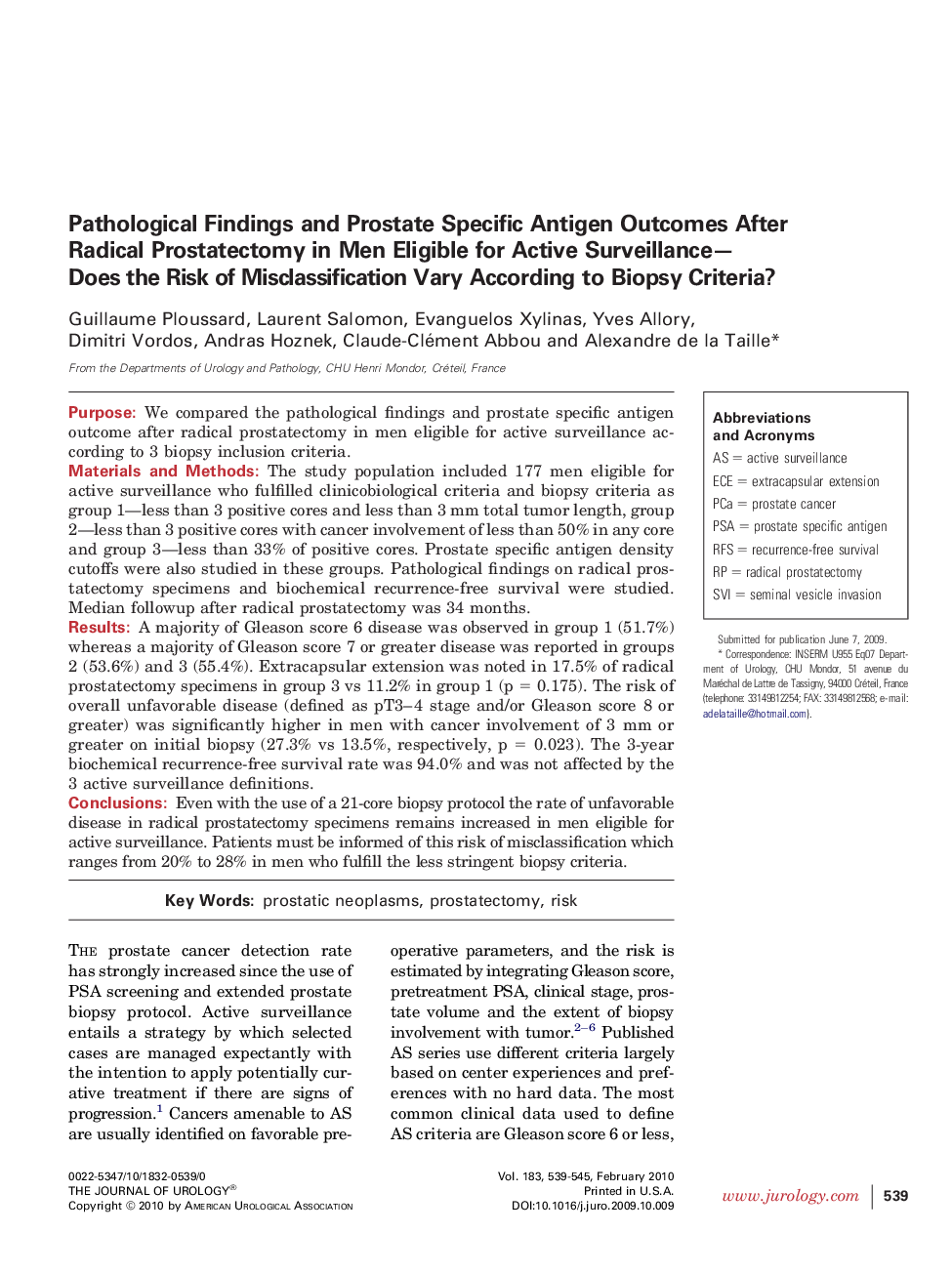| کد مقاله | کد نشریه | سال انتشار | مقاله انگلیسی | نسخه تمام متن |
|---|---|---|---|---|
| 3867286 | 1598968 | 2010 | 7 صفحه PDF | دانلود رایگان |

PurposeWe compared the pathological findings and prostate specific antigen outcome after radical prostatectomy in men eligible for active surveillance according to 3 biopsy inclusion criteria.Materials and MethodsThe study population included 177 men eligible for active surveillance who fulfilled clinicobiological criteria and biopsy criteria as group 1—less than 3 positive cores and less than 3 mm total tumor length, group 2—less than 3 positive cores with cancer involvement of less than 50% in any core and group 3—less than 33% of positive cores. Prostate specific antigen density cutoffs were also studied in these groups. Pathological findings on radical prostatectomy specimens and biochemical recurrence-free survival were studied. Median followup after radical prostatectomy was 34 months.ResultsA majority of Gleason score 6 disease was observed in group 1 (51.7%) whereas a majority of Gleason score 7 or greater disease was reported in groups 2 (53.6%) and 3 (55.4%). Extracapsular extension was noted in 17.5% of radical prostatectomy specimens in group 3 vs 11.2% in group 1 (p = 0.175). The risk of overall unfavorable disease (defined as pT3–4 stage and/or Gleason score 8 or greater) was significantly higher in men with cancer involvement of 3 mm or greater on initial biopsy (27.3% vs 13.5%, respectively, p = 0.023). The 3-year biochemical recurrence-free survival rate was 94.0% and was not affected by the 3 active surveillance definitions.ConclusionsEven with the use of a 21-core biopsy protocol the rate of unfavorable disease in radical prostatectomy specimens remains increased in men eligible for active surveillance. Patients must be informed of this risk of misclassification which ranges from 20% to 28% in men who fulfill the less stringent biopsy criteria.
Journal: The Journal of Urology - Volume 183, Issue 2, February 2010, Pages 539–545